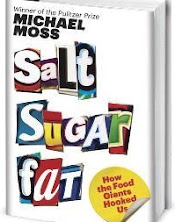Author: Helen Barer
Publisher: Thompson Gale
ISBN: 13 978-1-59414-585-8; 10 1-59414-585-7
Nora Franke, a food critic for MetroScene Magazine, is juggling several projects at Rancho de las Flores, a spa in
Alan Nardy, a regular spa guest whom Nora never met, is found dead in the mountains on a Sunday morning. The next evening, Nora and several others watch helplessly as Cece Clayton, another regular guest and a friend of Alan’s, sips a poisoned beverage and dies before their eyes. Throughout the week, Nora is injured in several inexplicable, but clearly dangerous, encounters. This formerly idyllic health spa has quickly become one of the unhealthiest venues on the planet. Nora is spurred to action by the realization that she must solve the murders before she becomes the next victim.
Fitness Kills reads like Agatha Christie on steroids. As Christie often did, Barer sets her mystery in an exotic, isolated locale. Although Barer tries, like Christie, to limit her cast to a small number of characters, she does not succeed in this endeavor. There are several bit characters that could (and should) have been trimmed. Unlike Christie, Barer does not conclude the story with a public confrontation and revelation of the killer’s identity. Perhaps it’s a reflection of our age that, even though Nora identifies and confronts the murderer, the book ends in a distinctly postmodern fashion. I find this type of ending unsatisfying, but that probably has more to do with me as a reader than it does with either the author or the story.
The story’s momentum starts briskly and never lets up. It is not a gripping, suspenseful tale, but it is entertaining. The characters are varied: some are quirky, some are fun, some are annoying, some are funny, some are intriguing and some are tiresome. Nora is quirky, fun, funny and intriguing, a mildly flawed yet likeable heroine. The plot, like all good mysteries, is littered with red herrings and false leads. Nevertheless, the clues regarding the killer’s identity are clearly visible, perhaps too much so, to the astute reader.
Helen Barer has much experience as a non-fiction author. Fitness Kills is her first Nora Franke mystery (the second one is underway). In this book, Barer’s overall skill as a writer is obvious, but her relative inexperience as a fiction writer is also evident. Her pacing, plotting and setting development are generally satisfactory, though her plotting and setting techniques could be improved. In general, however, her character development is the area in which she has the most room to grow. This does not mean that Fitness Kills is a poor effort. To the contrary, Nora Franke is a fine character who will be able to engage and hold readers for years to come. I, for one, am looking forward to developing a lifelong reading relationship with Nora and her cohorts. Other mystery fans also may want to start right at the beginning of this series so that they too may share in the pleasure of watching this character and her author as they grow together.
